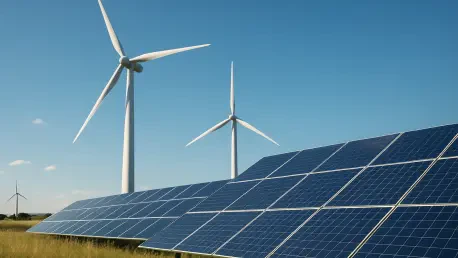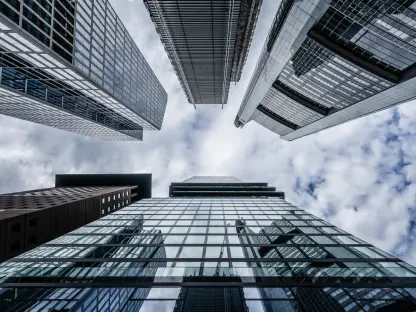In a world increasingly defined by the urgent need for sustainable solutions, the Philippines stands at a critical juncture where infrastructure and energy development must balance growth with environmental responsibility. Amid rapid urbanization and the push for renewable resources, engineering firms are tasked with creating systems that not only meet immediate demands but also safeguard the future. One company, Artelia, has emerged as a key player in this transformative landscape, driving innovative projects that prioritize sustainability across diverse sectors. From retail partnerships to renewable energy initiatives, this organization is redefining what it means to build for impact in the region. Its efforts highlight a broader shift toward green practices, offering a glimpse into how engineering can address both local challenges and global goals with precision and foresight.
Pioneering Sustainable Solutions Across Sectors
Transforming Retail with Green Innovations
A significant area of impact lies in the retail sector, where strategic partnerships are fostering environmentally conscious upgrades on a massive scale. Through collaboration with major industry players, comprehensive facilities management and engineering, procurement, and construction management services are being provided to over 500 sites nationwide. These efforts go beyond traditional operations by integrating electric vehicle charging stations and other green infrastructure enhancements. Such initiatives reflect a commitment to aligning retail operations with sustainability targets, reducing carbon footprints while meeting consumer needs. This approach not only modernizes retail spaces but also sets a precedent for how large-scale networks can adopt eco-friendly practices without compromising efficiency or reach.
Furthermore, the focus on sustainable retail solutions demonstrates adaptability in addressing the unique demands of expansive operations. By embedding green technologies into everyday infrastructure, these projects ensure that even high-traffic commercial environments contribute to broader environmental goals. The emphasis on scalability means that innovations implemented in one location can be replicated across hundreds of others, amplifying their impact. This systematic integration of sustainability into retail engineering serves as a model for other industries, proving that operational excellence and environmental stewardship can coexist. It also underscores the importance of forward-thinking design in transforming spaces that millions interact with daily.
Enhancing Industrial Operations with Tailored Engineering
Another critical domain is the industrial sector, where customized engineering solutions are driving safety and efficiency to new heights. Projects such as upgrading fire protection systems and specialized equipment for multinational manufacturers highlight a dedication to meeting stringent international standards. These upgrades are not merely technical fixes but strategic enhancements that ensure safer working environments while supporting sustainable scalability. By addressing specific operational challenges, these initiatives help industries maintain compliance and competitiveness in a global market, all while minimizing environmental risks.
Equally important is the client-centric philosophy that underpins these industrial projects. Tailored solutions are designed to solve unique problems, ensuring that each intervention aligns with the specific needs of the operation. This bespoke approach fosters long-term partnerships and builds trust, as clients see tangible improvements in both safety and productivity. Moreover, the focus on sustainability within industrial upgrades—such as reducing waste or optimizing energy use—reflects a broader trend toward responsible engineering. These efforts contribute to a more resilient industrial landscape, where innovation serves as a foundation for growth without ecological compromise.
Leading the Charge in Renewable Energy and Infrastructure
Powering Progress with Clean Energy Projects
In the realm of renewable energy, groundbreaking projects are paving the way for a cleaner, more sustainable future in the Philippines. Serving as the Owner’s Engineer and detailed design lead for a 4.6-MW Mini Hydropower Plant in Nueva Ecija, significant strides are being made to supply clean energy to local communities. This initiative is poised to play a vital role in the nation’s transition away from fossil fuels, providing a reliable power source that reduces greenhouse gas emissions. Additionally, leadership in securing environmental compliance for a 440-MWp/337-MWac Ground Mounted Solar PV Project in Isabela showcases a deep commitment to protecting ecosystems through rigorous impact assessments and human rights considerations.
Beyond individual projects, the broader vision for renewable energy involves setting benchmarks for responsible development. By prioritizing environmental stewardship alongside technical innovation, these initiatives ensure that progress does not come at the expense of natural resources or community well-being. The meticulous process of obtaining regulatory approvals, coupled with a focus on local context, demonstrates how renewable energy projects can balance ambitious goals with ethical practices. This dual focus is essential for building trust among stakeholders and ensuring that the shift to clean energy is both inclusive and sustainable over the long term.
Building Infrastructure for a Connected Future
Infrastructure development represents another cornerstone of sustainable engineering, with projects that redefine connectivity and mobility across the nation. Far beyond constructing buildings or roads, the vision encompasses airports that enhance regional access, bridges that link isolated communities, and public transit systems that move millions efficiently. These endeavors are designed with innovation at their core, ensuring that each structure serves as a building block for long-term societal advancement. By focusing on durability and accessibility, such projects aim to create a foundation for economic growth and improved quality of life.
Equally crucial is the integration of sustainability into the fabric of infrastructure planning. Green design principles are applied to minimize environmental impact, whether through energy-efficient materials or systems that reduce resource consumption over time. This forward-looking approach ensures that infrastructure not only meets current needs but also anticipates future challenges, such as climate change or population growth. By championing projects that prioritize both functionality and ecological balance, a blueprint is being crafted for a resilient future where connectivity and sustainability go hand in hand, shaping the nation for generations to come.
Reflecting on a Legacy of Impact
Looking back, the journey of blending sustainability with engineering excellence in the Philippines reveals a transformative force that reshapes industries, energy systems, and infrastructure. Projects spanning retail innovations, industrial upgrades, and renewable energy initiatives demonstrate a consistent dedication to balancing progress with responsibility. Each endeavor, from hydropower plants to solar projects, underscores a commitment to environmental and social stewardship that sets new standards for the region. As these efforts unfold, they build a legacy of solutions that address immediate needs while laying the groundwork for enduring resilience. Moving forward, the focus should remain on scaling these successes through continued collaboration and innovation, ensuring that sustainable engineering remains a catalyst for national development. Exploring new partnerships and technologies will be key to tackling emerging challenges, offering a path toward a future where growth and sustainability are inseparable.









